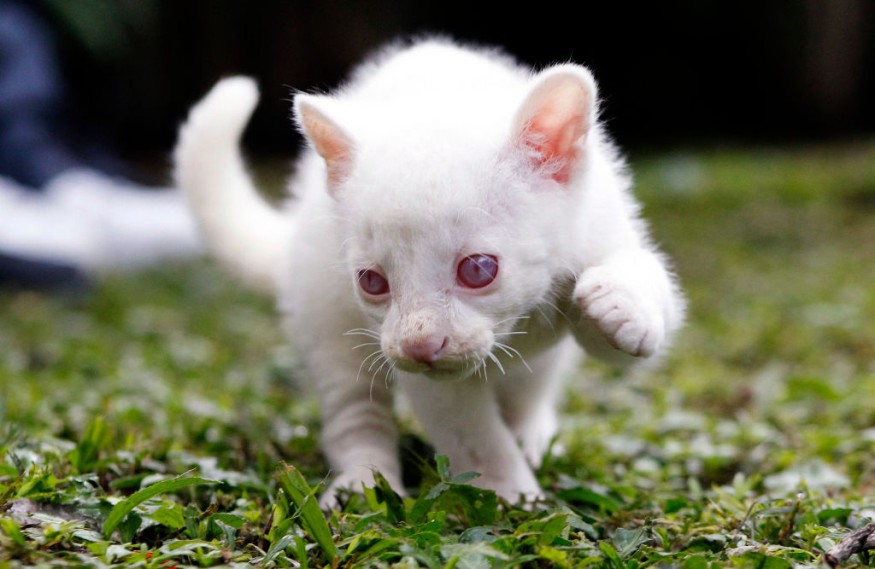Wildlife officials spotted a female albino jaguarundi cub in the Aburra Valley metropolitan area, the first of its kind to be found in Colombia. Mail Online reported that officials have already taken the cub to a nearby conservation park for medical treatment and as its permanent home because its white fur limits its chances of survival in the wild.
The female cub displays completely white fur and red eyes, which is due to a rare condition called albinism. This is the inability of the species to produce the pigment that gives color to its eyes and hair.

Female Albino Jaguarundi Cub
Jaguarundis (Puma yagouaroundi) is the smallest species of puma that live in North and South America, although they are very rarely found in Mexico. These animals are solitary and only meet fellow jaguarundis during mating season.
Yuliany Duque, the Almafi Municipality veterinarian said in a statement that authorities are working with the volunteer fire department to rescue the animal they found that is four hours away from an urban area. The conservation park where they took the albino jaguarundi cub shared a video, showing its health state while being taken care of by wildlife experts.
The albino cub has small ears, a sleek body, short legs, and a long tail. Even though it is small now, experts said that it can grow up to four and a half feet long. Its unique fur is different from the common varieties of the jaguarundi, which could either be a reddish-brown called eyra, or a grayish. According to Mail Online, both types can occur in one litter.
Jaguarundis usually mate at the end of the year, in which they could give birth to two or three cubs after 63 days gestation period. In the albino cub's case, albinism could be passed to its future offspring if it mates with another albino jaguarundi because both would be carrying the recessive gene.
Albinism vs. Leucism
Albinism and leucism are often hard to distinguish in animals because the conditions share similar characteristics. But the most noticeable trait of an animal with albinism is its pale white skin, hair, fur, plumage, and scales.
According to Treehugger, albinism in animals is inherited when both parents are carrying the recessive mutated genes that interfere with the body's ability to produce melanin, the natural pigment that gives the hair, skin, and eyes their color.
On the other hand, leucism results in a reduction of not just melanin but also other pigments in the body. They could appear pale or in muted colors or have irregular patches of white. But similar to albinism, leucism is also hereditary and muted colors can vary between parents and offspring or could also skip a generation.
The simplest way to tell whether an animal is an albino or leucistic is by looking at their eyes. While albino has either red or pink eyes, leucistic animals have dark-colored eyes.
Unfortunately, albino animals have a harder time surviving in the wild because their lack of pigmentation makes it difficult to camouflage and avoid predators and prevent them from hunting for food due to reduced vision. Additionally, albinism increases their exposure to ultraviolet rays making it harder for them to find a mate.
RELATED ARTICLE : First-Ever Albino Shark Caught in Britain
Check out more news and information on Albinism in Science Times.











